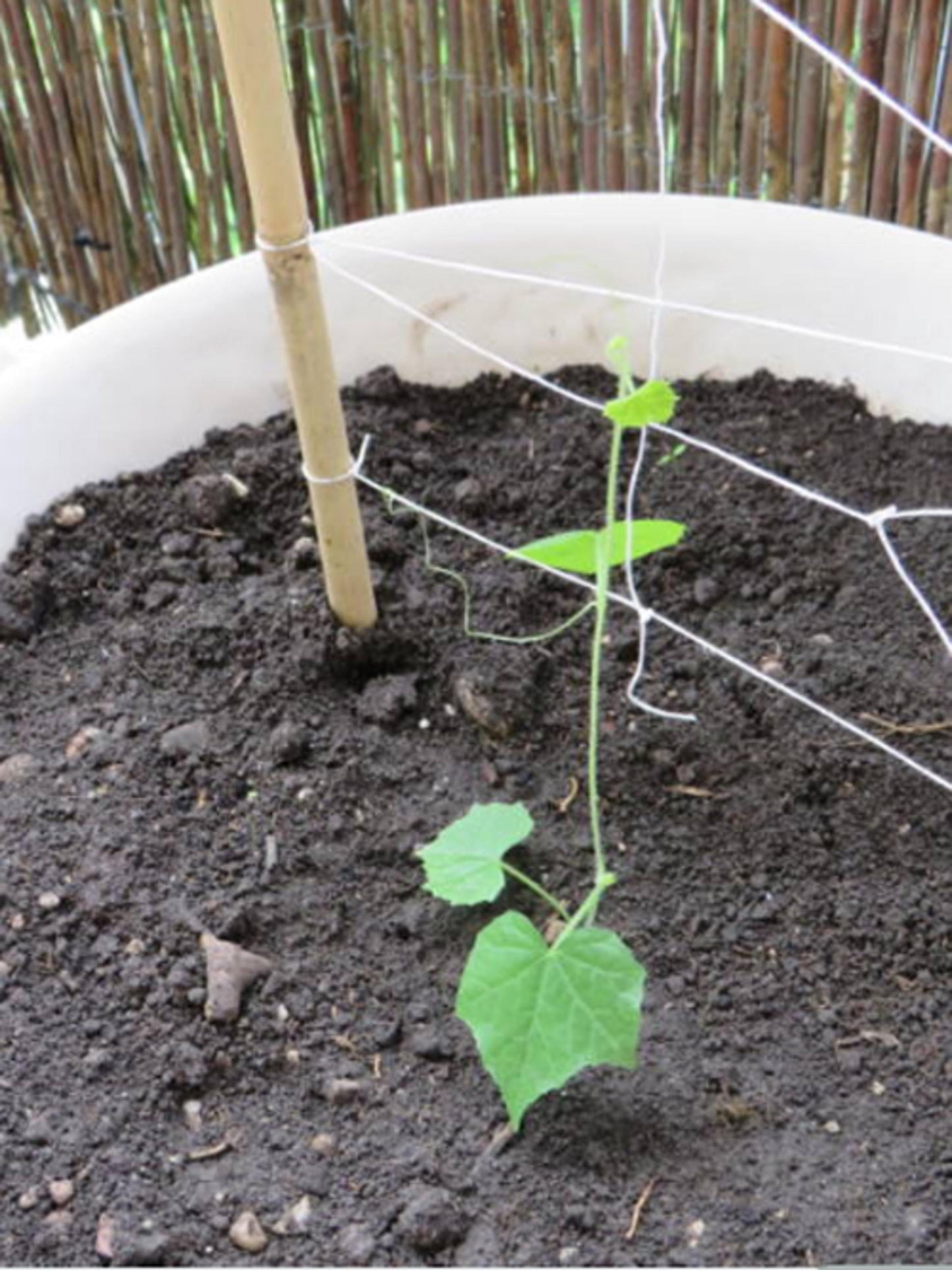Cucamelons (Melothria scabra), also known as Mexican Sour Gherkins or Sanditas, are delightful, bite-sized fruits that resemble tiny fairy watermelons but taste like tangy cucumbers with a hint of lemon. These crisp, juicy fruits grow on vigorous vines, producing high yields from summer to fall. Perfect for snacking, adding to salads, salsas, or pickling, cucamelons are both ornamental and delicious. Native to Mexico and Central America, cucamelons thrive in warm, sunny conditions and are particularly productive in hot weather. Easy to grow and a fun addition to any garden!
* SCROLL DOWN FOR DETAILED GROWING INFO *
All Nimble NiteCap Seeds are:
• Heirloom
• Organic
• Non-GMO
• Open Pollinated
• Untreated
• US Grown
• growing instructions included
• Regular testing is conducted to uphold the highest germination standards, all the while employing appropriate seed storage techniques.
Sustainable Packaging & Shipping:
• NimbleNitecap seeds are packed in eco-friendly, compostable seed packets. Seed packets are printed in-house with vegetable-based inks on biodegradable, recycled materials. (Small plastic bags are infrequently used to prevent the loss of very small seeds.)
• All orders are carefully packed and shipped with tracking via USPS First Class (or Priority, if selected) in padded ECOENCLOSE recycled and reusable mailers or recycled boxes to protect your items in transit.
Most orders ship out the same or next business day! Please note that this time may be extended during peak season.
• FREE SHIPPING on all orders of $35 or more. Flat Rate shipping no matter how many packets you order.
* DIRECTIONS *
Common Names: Mexican Sour Gherkin, Sandita, Sandia de Raton
Latin Name: Melothria scabra
Type: Vine Vegetable
Life Cycle: Annual
USDA Zones: 4 - 10
Stratification: Not required
Germination Ease: Moderate (pre-soaking recommended)
Sunlight: Full Sun
Moisture: Prefers consistently moist, well-drained soil
Soil: Rich, well-drained soil with a pH between 6.0 and 7.0
Height: 6-10 feet (vine length)
Spread: 12-18 inches
Color: Green with white speckles
Bloom Season: N/A (grown for fruit, not flowers)
Companion Plants: Suitable companions include beans, corn, and radishes.
Potential Toxicity: Non-toxic to humans and pets
Climate Adaptability: Thrives in warm climates; heat-loving and frost-sensitive
~ Sowing ~
When to Start Inside: Recommended for short-season areas. Start seeds indoors 2 to 4 weeks before transplanting, which should be done within 2 weeks after your average last frost date. Consider sowing into biodegradable pots to avoid disturbing the roots, as they are sensitive to disturbance.
When to Start Outside: 1 to 2 weeks after your average last frost date, when soil temperature is 70°–90°F.
Planting Depth: ¼ inch deep
Watering: Keep the soil consistently moist but not waterlogged.
Light and Temperature: Cucamelons thrive in full sun and warm temperatures, between 70°–90°F.
Germination: 4-13 days
~ Transplanting Seedlings Outdoors ~
Timing: Transplant seedlings outdoors when they have 4-6 true leaves and after the risk of frost has passed.
Location: Choose a sunny location with well-drained soil.
Spacing: Space plants 12-18 inches apart to allow for adequate growth.
Transplanting: Gently transplant seedlings into prepared soil, ensuring the root ball is covered and the plant is stable. Water well after planting.
~ Growing ~
Watering: Water regularly to keep the soil evenly moist. Mulching can help retain soil moisture and keep roots cool.
Fertilizing: Apply a balanced fertilizer or compost at planting time. A light side-dressing of compost or fertilizer can be applied every few weeks during the growing season.
Pest and Disease Management: Monitor for common pests such as aphids and spider mites. Use organic pest control methods like insecticidal soap or neem oil as needed.
Maintenance: Provide support for the vines to climb, such as a trellis or fence. Regularly check for pests and remove any affected leaves.
~ Harvesting ~
When to Harvest: Pick fruits when they are about the size of a grape or under 1 inch long for the best flavor. As the fruits mature, they become more sour and can develop more seeds.
How to Harvest: Cut the stem rather than pulling at the fruit to avoid damaging the vine. Dunk the harvested fruits in cold water to disperse field heat—this helps to maintain the quality and extend the life of your picked fruit.
Drying and Storing: Cucamelons are best enjoyed fresh. Store any extra in the refrigerator in a plastic bag or container.
~ Seed Saving ~
Allow some fruits to fully mature and turn yellow on the vine for seed saving. Scoop out the seeds, rinse them, and allow them to dry completely before storing them in a cool, dry place for future planting.
~ Additional Information ~
Forage for Pollinators: The small, delicate flowers of the cucamelon attract bees and other beneficial insects, making them a great addition to a pollinator-friendly garden.
Origin: Native to Mexico and Central America, cucamelons have been a beloved part of local diets for centuries.
Nomenclature: The name "Melothria scabra" reflects the plant's classification, with "scabra" referring to the rough texture of the leaves.
History: Cucamelons have a long history of cultivation in Mexico and Central America, where they have been enjoyed as a dietary staple since pre-Columbian times. Their unique appearance and flavor have made them a popular choice for gardeners around the world.
Potential Toxicity: Non-toxic and safe for consumption by humans and pets.
Climate Adaptability: Cucamelons thrive in warm climates and are particularly suited for regions with long, hot summers. They can also be grown in a greenhouse or warm, sheltered area in cooler climates.



















